Indoor palm plants: Species, characteristics and care tips
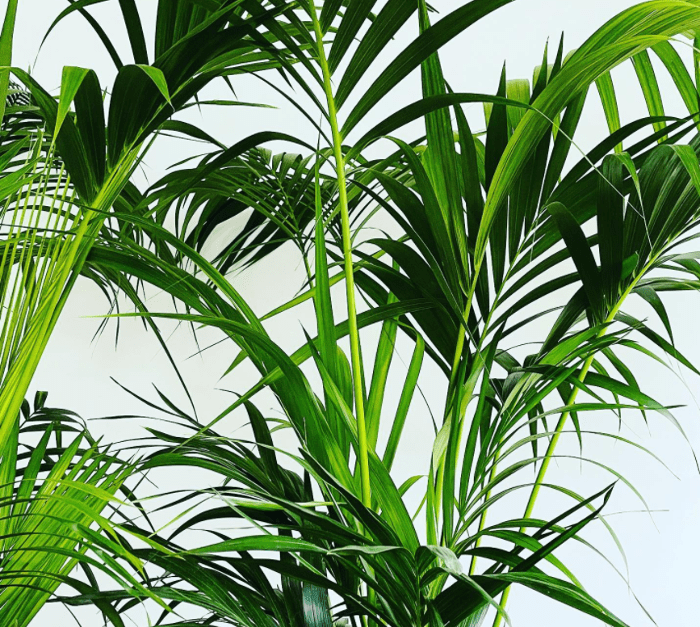
Indoor palm plants: Do you want to feel on vacation at home? Do you want to add an exotic touch to your interiors? the indoor palm trees are an excellent choice and present an element of decoration due to their very graphic palms. In addition to the very decorative palm tree leaves, the palm tree is known for its depolluting and purifying properties. However, not all varieties are suitable for indoors but rather for the balcony or the terrace. Let’s find out in this article the most beautiful indoor palm species and how to care for them.
Indoor palm plants species
Chamaedorea elegans
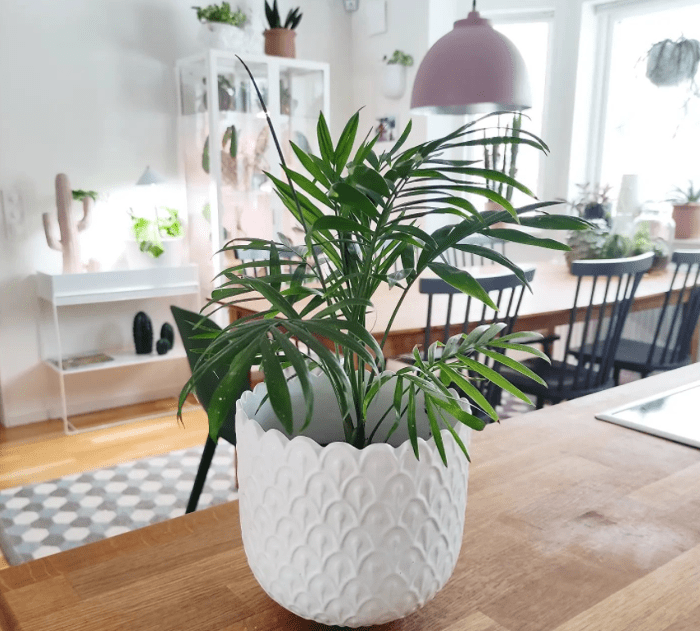
Chamaedorea elegans, named also the Neanthe Bella Palm or Parlour Palm, is a species of small palm tree native to the rainforests in Southern Mexico and Guatemala. This lovely plant with deep green foliage has long been used as an indoor plant. It’s one of the most commonly cultivated palms in the world and it’s also one of the cheapest palms you can buy. Parlour palm appreciates a light to semi-shaded location but you can also put it outside during the summer. Dry air from heating in the apartment can cause the tips of its leaves to turn brown. An occasional spray of water will remedy this.
Chamaedorea seifrizii
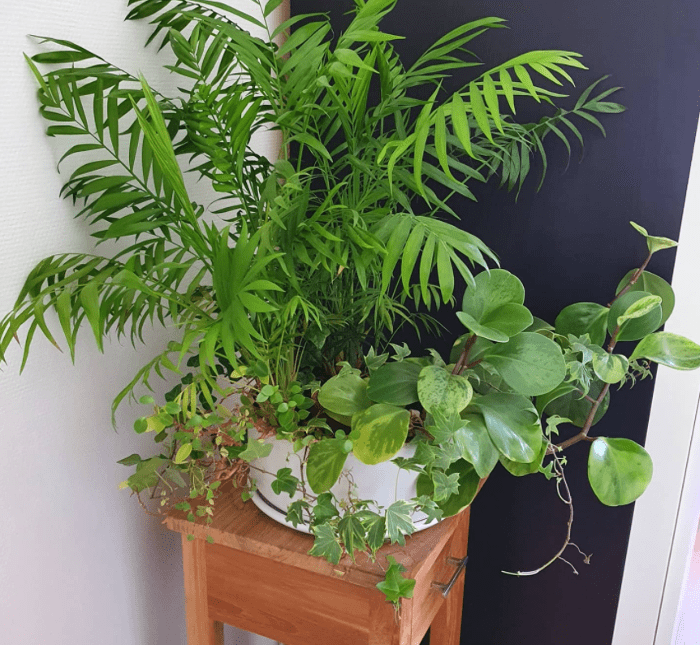
Chamaedorea seifrizii, named also Bamboo palm due to its multi-stemmed growth habit, resembling that of bamboo, is a member of the Arecaceae family native to forested regions of Central America, Honduras, Guatemala, and Mexico. This evergreen indoor palm can reach 2m height indoors and 3.5m height outdoors. The pinnate leaves of this palm tree grow on long and slender stems. Thanks to its exceptional shape and easy maintenance, this plant makes an excellent houseplant.
Cocos nucifera
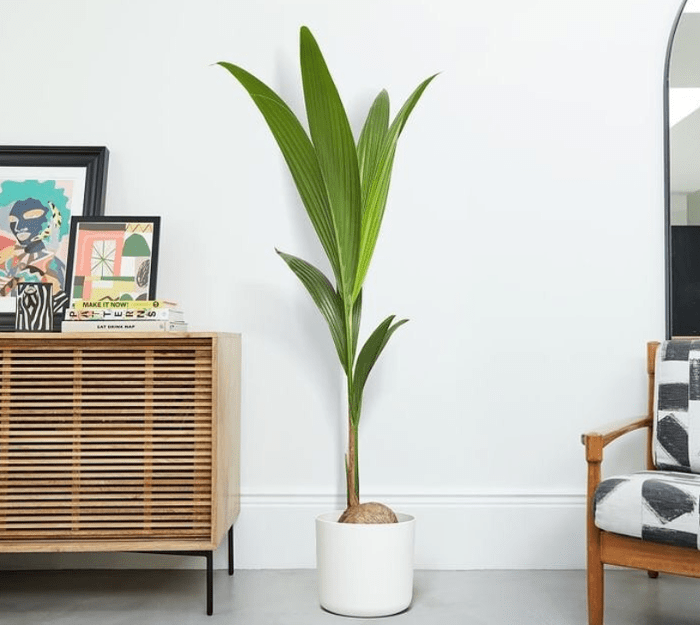
Cocos nucifera or the coconut palm plant is a wonderful member of the Arecaceae family. It is a striking singular palm with boasts wide, glossy pleated leaves shooting from the coconut shell. This extraordinary aesthetic palm can reach 3m in height in good conditions. However, you will only keep it for 3 years on average because the nut will naturally deteriorate. Put this indoor palm in a very bright area, kept it at 25°C and ensure a humid atmosphere.
Dypsis lutescens
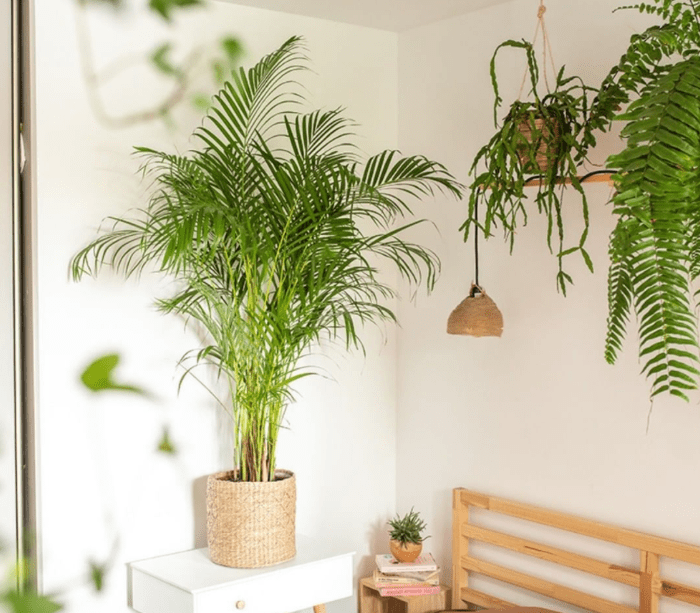
Dypsis lutescens, named commonly Areca palm, yellow butterfly palm or golden cane palm, is the most popular ornamental palm grown indoors from the Dypsis genus. This beautiful, decorative and very easy-care indoor palm comes from Madagascar. It forms yellowish stems topped with tufts of leaves. These leaves can reach 5 meters in the wild and 2 meters indoors. The taller the plant, the longer the clumps and the more graceful the appearance of the plant. Furthermore, It is the yellow-green coloring of the petiole of the mature fronds that have given this plant its common name, golden palm, as well as its Latin name, lutescens which means yellowish. The highly decorative appeal and easy maintenance of this palm tree make it a favorite choice for plant lovers.
Howea forsteriana
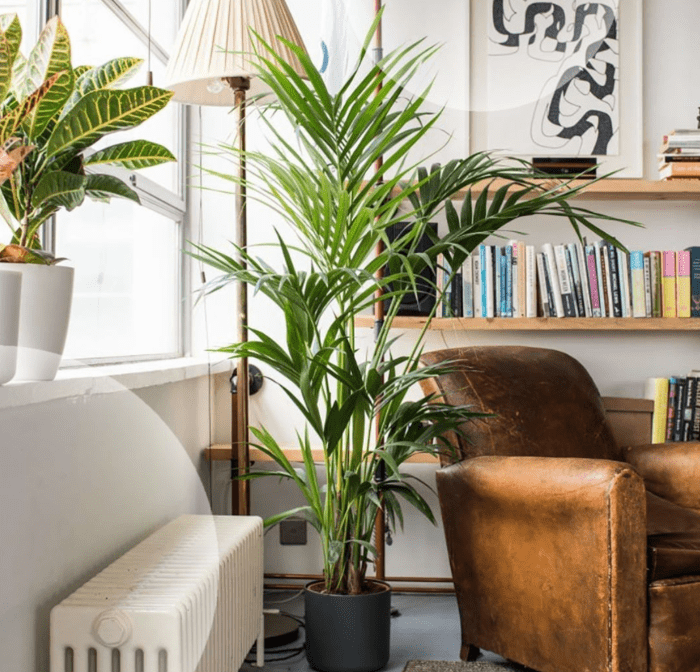
Howea forsteriana, the Kentia palm, thatch palm or palm court palm, is a species of flowering plant in the Arecaceae , endemic to Lord Howe Island (Australia). With its 3 m high and its shiny, supple, slender and green palms, Kentia palm is one of the types of palm trees with large indoor palms that will beautify a living room, dining room, office or glazed hall. We know also Kentia for its depolluting and purifying properties. It would absorb benzene and toluene. Keep it in a bright place with a temperature range between 15°C and 24°C.
Beaucarnea recurvata
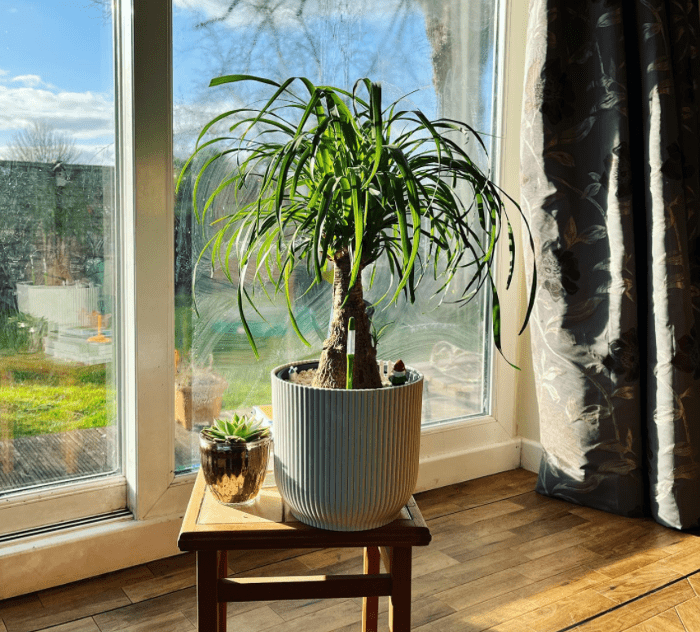
Beaucarnea recurvata, the elephant’s foot or ponytail palm, is a unique, long-lived indoor plant that belongs to the Asparagaceae family. Indoors, we can grow this plant in shallow pots, with a tuft of strappy green leaves emerging from a bulbous stem that seems to erupt from the soil. Despite the common name and the appearance of the foliage, the Ponytail Palm is neither a palm nor a tree, it’s actually a member of the Agave family, native to the southeastern desert of Mexico. This drought-tolerant, slow-growing plant is also easy to grow and requires very little care.
Chamaerops humilis
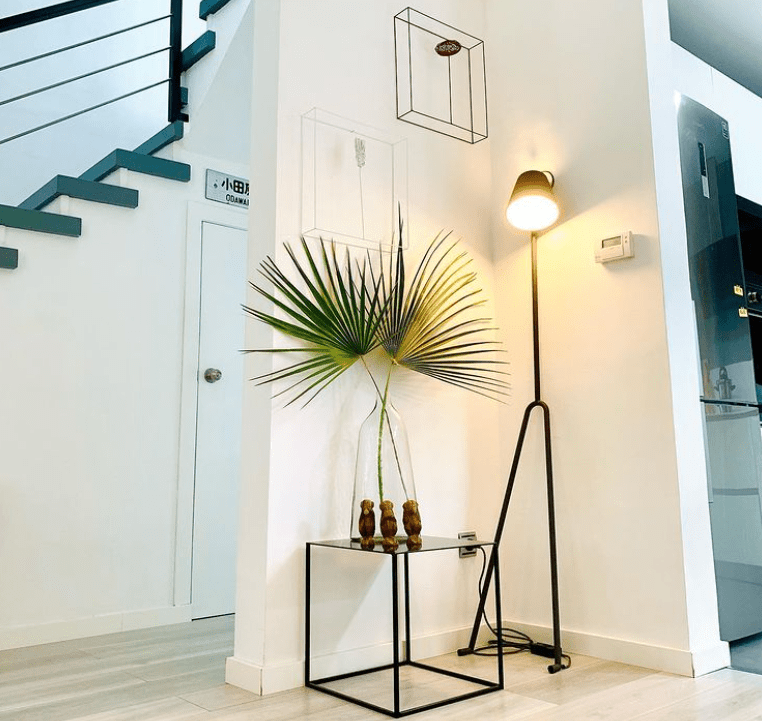
Chamaerops humilis, named also European fan palm or dwarf fan palm, is a small, bushy evergreen palm with distinctive, huge green leaves which spread out in a very attractive fan form. Whether grown in the ground or in a container, this palm is very undemanding and can withstand temperatures down to -12 degrees. This small palm tree is also very resistant to drought, which is why it adapts very well to pot culture. Indoors, put your dwarf palm away from drafts, in light, without direct sunlight. Don’t hesitate to take it out in the summer, in a shaded and windless location.
Trachycarpus fortunei
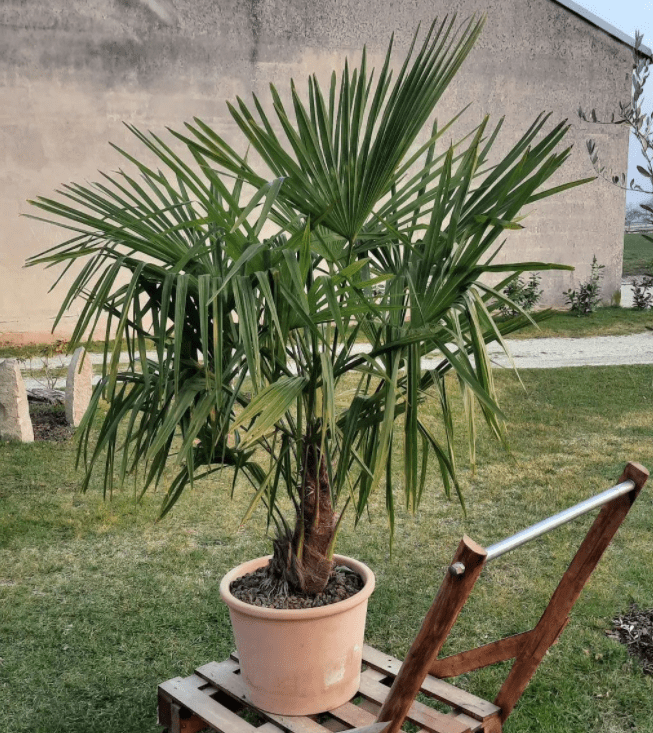
Trachycarpus fortunei, commonly known as windmill palm, is a slow-growing palm native to China. It is one of the hardiest palms available to grow indoors or outside in the garden. Moreover, this highly ornamental palm can typically reach an ultimate height of 2.5 metres indoors. This plant has a single trunk-like stem covered with brown fibres and stiff, fan-shaped leaves that are beautifully compacted radiating from its stem on a sturdy trunk.
Special plant palm care
Pot and substrate
The choice of the container must take into account two essential elements. Palm trees have a large root system and therefore need space, choose pots of the right size. These must imperatively be perforated because the indoor palm plants do not support soggy clods and stagnant water.
Water
The waterings must be regular, leaving the mixture to dry up on the surface between two waterings and never letting water stagnate in the saucer. Always water with water at room temperature, as soon as the top of the soil is dry.
Light
Most indoor palm plants don’t like direct light, but they will thrive well behind a veiled window. For this reason, it will be better to place them near a west-facing window.
In summer, you can also aerate your plant by moving it to the garden in a semi-shaded place sheltered from the wind. It will dress your exterior with a southern decorative touch, and thus take a breath of fresh air which will restore its strength before winter.
Did You find this helpful? Share it with your friends!